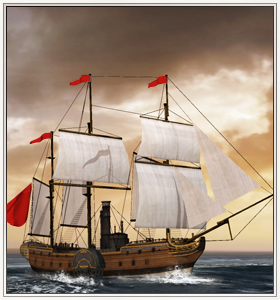Difference between revisions of "Steamship (ETW Unit)"
Tango12345 (talk | contribs) m (correcting table) |
Tango12345 (talk | contribs) m (Removed category "Steam Ship" (using HotCat)) |
||
| Line 12: | Line 12: | ||
*[[Image:Britain_flag.jpg|25px]] [[Great Britain (ETW Faction)|Great Britain]] | *[[Image:Britain_flag.jpg|25px]] [[Great Britain (ETW Faction)|Great Britain]] | ||
| − | + | ||
[[Category:Empire Total War Units]] | [[Category:Empire Total War Units]] | ||
Revision as of 05:37, 22 August 2011
Overview
By fitting a steam engine and all its machinery into an existing hull, naval architects hoped to create a ship-of-the-line not tied to the wind and tide. In this, they were moderately successful. A steamship can sail independently of the prevailing winds, but most still spend a good deal of time under sail. Coal is expensive, and coaling stations are few and far between; steam is not a practical method of strategic movement.
Tactically, however, it is a different story. With powerful guns, a steamship can out-manoeuvre any sailing ship. Admittedly, the idea of going into battle with a fire raging in the belly of his ship is not one that appeals to every captain. Boiler explosions are not entirely unknown either, as safety features are installed as the fancy takes the engineer, not as a matter of course. A stray shot through the engine room can also do terrible damage.
Historically, The conversion of ships of the line to steam was never going to be anything more than a stopgap measure. Steamships, with their dirt and smoke, were not popular with traditionally minded captains, particularly in the British Royal Navy. They expected obsessively high standards of neatness and cleanliness, with no soot and lubricating oil smeared over their nice clean ships.
